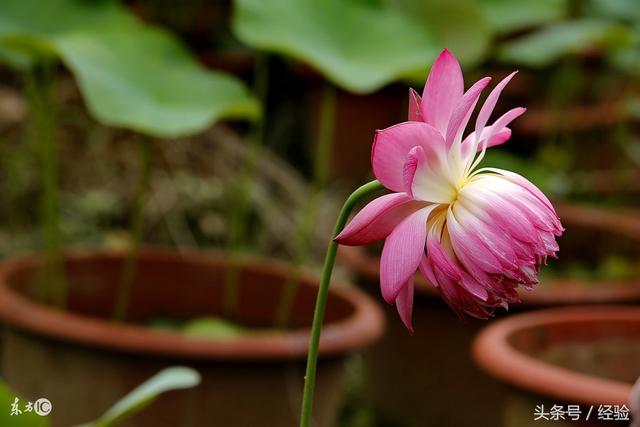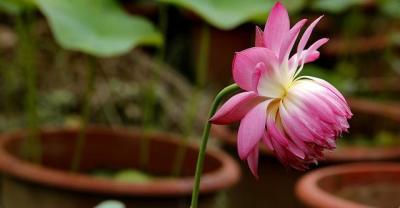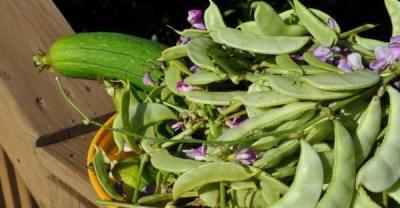Pot planting techniques of ornamental lotus
First, the selection of pots: small lotus varieties are planted in pots (caliber 26 cm, height 20 cm); medium-sized lotus varieties are planted in pots (caliber 30 cm, height 21-26 cm); large lotus pots with a diameter of more than 36 cm, do not use pointed bottom pots. Courtyards or units put optional high-grade ceramic pots; build ornamental lotus scenic spots or bases should be pots, vats, ponds, lakes and pots to increase each other's brilliance; industrial production should be listed on the market to sell commodity pots, should choose beautiful, lightweight, cheap plastic flowerpots, seal the bottom hole with cement, the height and diameter range is 26-36 cm. For the first time, the pot caliber should be larger to facilitate early flowering, more flowering and the development of lotus root. After having some experience, you can carry out small, miniature potted plants (caliber 12-18 cm).
Soil preparation (except for soilless cultivation): vegetable garden soil, farmland soil, pollution-free river pond mud where fish and grass can grow, add half a basin of soil in each basin, soak in clean water and set aside. Do not apply fertilizer. Do not pollute mud and sewer sludge with chemical industry.
3. Timely: the terminal bud of lotus sprouts when the temperature exceeds 15 ℃ and grows rapidly above 20 ℃. It can be cultivated in the south in early March and in the north in late April.
Fourth, planting: put the seed lotus root flat or the top obliquely buried in the mud 8-16 cm. Depending on the size of the lotus root, you can master it flexibly and plant only one plant in each pot. Add water to 3-6 cm of mud. If the temperature is on the low side, you can use the "plastic film covering method" summarized in Liujia Garden, covered at night, lifted at noon, safe and simple, sprouting neatly.
Fifth, fertilization: do not apply fertilizer at the first planting. After standing leaves come out of water, if the leaves turn yellow, you can trace a small amount of soaked plant cake fertilizer solution or phosphorus and potassium compound fertilizer, preferably imported diammonium phosphate, 10-16 tablets per pot at intervals of 2-3 weeks. Different varieties have different degrees of fertilizer tolerance, so dilute fertilizer should be applied frequently, first tested, and then popularized. Do not apply urea before flowering. Fertilization principle: better less than more, first less and then more, more phosphorus and potassium and less nitrogen.
Sixth, management: potted lotus must be placed in a ventilated and sunny place, with 1800-2200 pots per mu, with a sidewalk with a width of 80-90 cm on both sides. Planted in April, buds appeared successively in late May, and flowered in the first and middle of June, the commodity potted lotus can be listed with flowers at a price of 30-100 yuan. Late flowering varieties or secondary planting can bloom until early October. The lotus produces silt but does not dye, and generally has no diseases and insect pests, but it is easy to be infected with aphids in the early stage due to poor ventilation or near vegetables and orchards. You can use a small amount of washing powder plus enemy liquid spray to kill 1000 times the liquid, and the moss in the basin can be removed manually. Or sprinkle along the edge of the basin with copper sulfate and quicklime at 1:1, do not touch the lotus leaves. Experiment first, then popularize.
The lotus has new buds and old leaves together, buds, flowers and fruits coexist, viewing leaves, flowers and fruits for more than 6 months. After flowering, the underground new lotus root is formed (2-3 branches per pot), and the leaves are yellow and withered, which belongs to natural senescence, keep shallow water, and cut off the residual load after winter. The original basin in the south of the Yangtze River overwinters, the Huang-Huai area is covered with double-layer plastic film, and the original basin in Northeast and Northwest China is buried under the permafrost layer and covered with plastic film, and the temperature in the basin during the overwintering dormant period is controlled at 3-10 ℃. The plants were planted in the pot after the spring was warm.
July and secondary planting: during the growth period from June to August, the pot was turned on overcast and rainy days. Planting lotus root whips with terminal buds or lateral buds can improve the reproduction coefficient, shorten the shape of the rosette, prolong the flowering period, and make the potted lotus blossom in the second and third seasons.... no, no, no.
Winter lotus: winter lotus is a new variety with low temperature tolerance selected from hundreds of lotus species in our garden. It was first planted in April and blossomed from June to July. The second time in the middle and last ten days of August, turn the pot and plant new lotus root, change the pot soil, 2 branches per pot. Enter the solar greenhouse in late September and keep warm for more than 20 ℃. Strengthen the light in rainy and snowy days (fluorescent lamps) and blossom from November to Spring Festival.

- Prev

How to plant and manage lilies
One of the three cut lilies, beautiful flowers, loved by flowers, many flower friends also like to plant, lilies are bulbous herbs of the lily family. A hundred.
- Next

Aerosol cultivation, romantic planting
Spray cultivation Animation demonstration spray cultivation, also known as aerosol culture or spray culture, it uses a spray device to atomize the nutrient solution into a small droplet and spray it directly to the plant root.
Related
- Fuxing push coffee new agricultural production and marketing class: lack of small-scale processing plants
- Jujube rice field leisure farm deep ploughing Yilan for five years to create a space for organic food and play
- Nongyu Farm-A trial of organic papaya for brave women with advanced technology
- Four points for attention in the prevention and control of diseases and insect pests of edible fungi
- How to add nutrient solution to Edible Fungi
- Is there any good way to control edible fungus mites?
- Open Inoculation Technology of Edible Fungi
- Is there any clever way to use fertilizer for edible fungus in winter?
- What agents are used to kill the pathogens of edible fungi in the mushroom shed?
- Rapid drying of Edible Fungi

